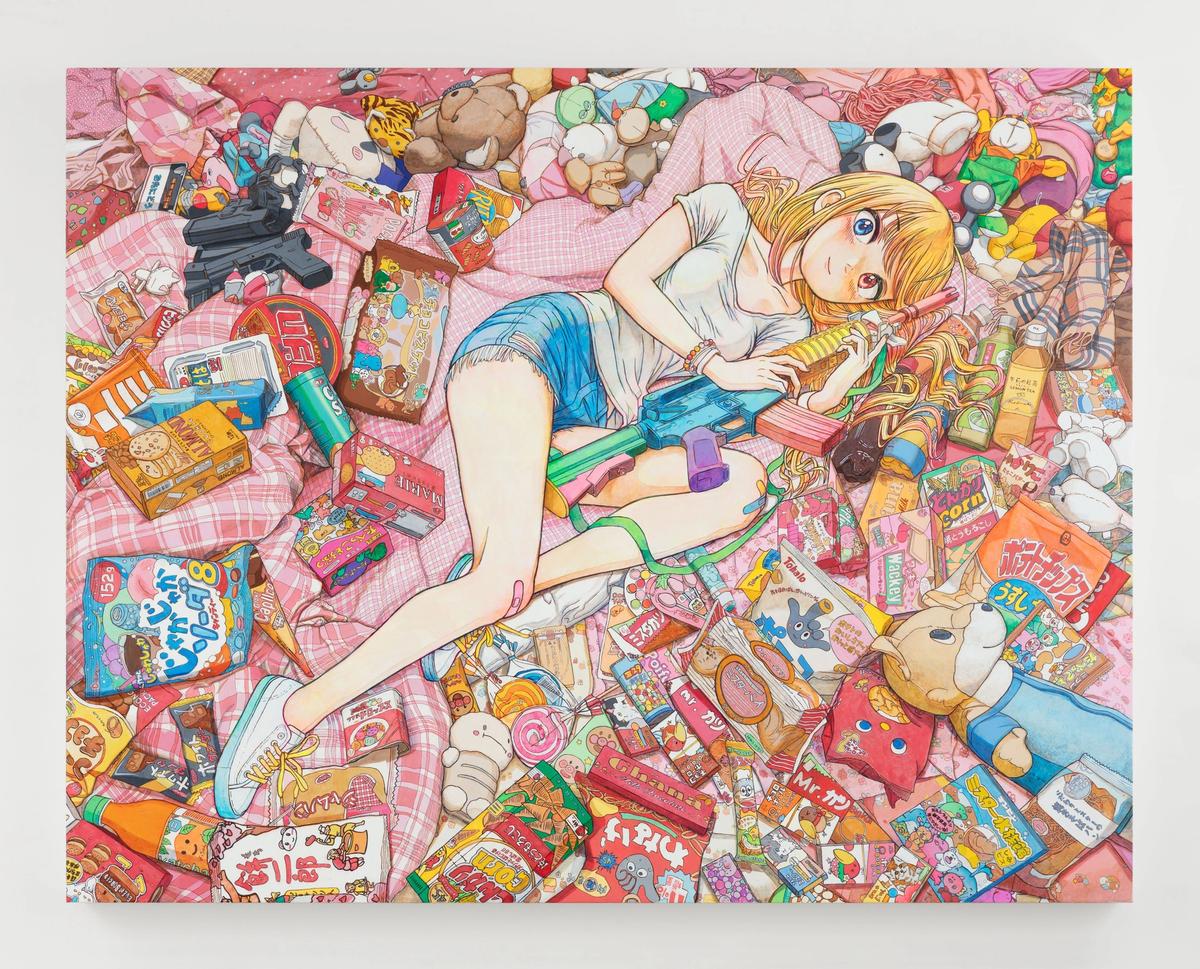Japanese artist Mr., a protégé of Takashi Murakami, and American R&B singer and music producer Pharrell Williams, have collaborated on a site-specific installation for the Musée Guimet in Paris, home to the largest collection of Asian arts in Europe. Filling the museum’s top floor rotunda, Carte blanche to Mr. and Pharrell Williams: A Call to Action is a dizzying mash-up of vivid paintings, sculptures and neon lights.
But should the museum have given the duo full carte blanche? The slightly surreal Manga-inspired scenes depict children in military gear armed with candy, teddy bears and, in a frightening twist, colourful guns. If there is a political message to the exhibition, it has almost certainly missed its mark.
“While the exhibition explores the intrinsic potential of youth, the message may seem unclear at first”, says Sophie Makariou, current director of the Musée Guimet, before pointing out that Mr. was a survivor of domestic violence. That could help explain the contradictions and ambiguities in his work—the artist is known for featuring young characters in both playful and chaotic environments.
“In this age of uncertainty we live in, we have to believe in kids and hold on to the hope they embody. They have the power to make a real change”, says Mr., whose toy-looking rifles do not symbolise violence, per se, but militance. Children’s best weapon, to be protected at all costs, is their creativity and imagination, according to the artist.
Of Mr.’s brash, pop-culture infused aesthetic, Williams says: “His perspective on life seems to be from the lands of a perpetual teenager.” But a return to a more youthful state of mind is exactly what the singer thinks the world needs. “War, education, ecology—all important decisions are made by grown-ups. What if children took control of the future’s narrative, which is what I feel about today’s Millennials and Gen Z-ers. They care enough to step up, trying to set an example for the next generation.”
“It took us five years to put this show together, because we didn’t want to offend anyone”, says the dealer Emmanuel Perrotin, who introduced Williams and Mr. about ten years ago (works by both of them were simultaneously showcased in his Paris gallery in 2008). “We hope people won’t see the installation as an apology for child soldiers”.
Williams notes that the plight of children in conflict zones is something he wants to raise awareness of: "How can you not empathise for what they are going through and not try to make sense of it in a way where we can flip it on its head?” If Carte Blanche is supposed to be a revolutionary call to action, it will likely take more than a flashy palette and cartoon imagery.


